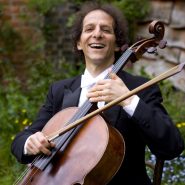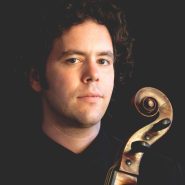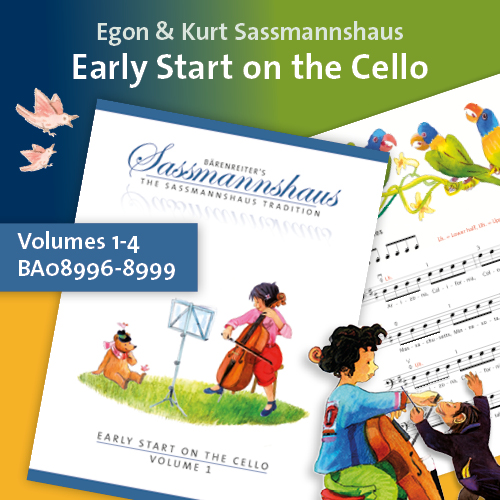Tag: cellobello
By Robert Battey December 15, 2013
Subjects Practicing
Tags accents, alignment, Awareness, Bach, Bach Cello Suites, bar lines, Battey, Beethoven’s “Archduke” Trio, Brahms Double Concerto, Capucon, cello, cellobello, communication, complexity, conservatory, counting, dissonance, Feuermann, focused listening, great artists, great composers, intelligent artist, interpreter, interpretive decisions, intonation, melody, metrical organization, musical critic, musical phrasing, performer, phrase lengths, phrasing, powerful, recordings, resolution, robert, Rostropovich, score-study, slurs, studying, stunning effect, stylistic conventions, text, vibrato, Washington Post, Yo-Yo Ma, youtube
By Aron Zelkowicz December 8, 2013
Subjects Interviews, Repertoire
Tags Aron, Britten, Britten Cello Suites, Britten Cello Symphony, cello, cellobello, chant, conducting, improvisation, interview, Introduzione, Isserlis, manuscript, multiple versions, performance, premiere, recording, Rostropovich, Russian Orthodox Liturgy, Shostakovich, Sonata, Steven, Tavener, third suite, Zelkowicz
By Selma Gokcen November 26, 2013
Subjects Playing Healthy
Tags accuracy, act, Alexander Technique, attention, Awareness, back, blog, cello, cello playing, cellobello, detect your intention, discovery, distress, effect, effect on cello playing, effortless quality, experiment, familiar, fingers, Gokcen, Habits, head to toe, holding, motion, neck, neuromuscular system, our surroundings, overdoing, pack up our habits, position of rest, Preparation, response, response to life, Selma, sitting, solution, standing, successful functioning in daily activities, support, tension, the preparation phase of movement, well-practiced
By Aron Zelkowicz November 21, 2013
Subjects Interviews, Repertoire
Tags analysis, Aron, Bach, Benjamin Britten, Britten, cello, cello suites, cellobello, Colin Carr, composition, differences in performance, Growth, interview, live recording, live-performance, Menlo, Menuhin School, microphones, Music@Menlo, performance, recordings, Rostropovich, solo debut album, Suites, Zelkowicz
By Aron Zelkowicz November 12, 2013
Subjects Repertoire
By Aron Zelkowicz November 12, 2013
Subjects Interviews, Repertoire
Tags Aron, audience, Benjamin Britten, Britten, Britten Cello Suites, cello, cello suites, cellobello, complete suites, discoveries, discovery, editorial markings, fingerings, inflection, interview with Steven Doane, movements, performance, perspective, phrasing, recital, recitals, recordings, Sound, Steven Doane, Suites, Zelkowicz
By Aron Zelkowicz November 12, 2013
Subjects Repertoire
Tags 1971, Aron, Benjamin Britten, Britten solo cello suites, canto, cello, cellobello, centenary, compelling interpreters, effect, Effective, genius, grandiose, indulge, Janos Starker, memory, movements, Mstislav Rostropovich, navigation, non-verbal drama, opera, Performing, personality, pizzicati, silences, solo cello suites, solo suites, Suites, Zelkowicz
By Guy Fishman October 25, 2013
Subjects Baroque, Historical
Tags academic, Anner Bylsma, Bach Suites, Baroque, Beethoven, Boccherini, Brahms, Carter Brey, cellists, cello, cellobello, critic, curiosity, David Soyer, dual careers, endpins, experiments, gut strings, historically-informed performance, interest, Jascha Heifetz, Matt Haimovitz, modern playing, New York, Pablo Casals, Paul Katz, performance, possibility, prominence, teachers, Vivaldi, Yo-Yo Ma
By Selma Gokcen October 17, 2013
Subjects Playing Healthy
Tags acrobatics, Alexander Technique, ankle, arms, cello, cello playing, cellobello, elbow, firm, foot, freedom of movement, Glenohumeral Joint, Gokcen, heavy lifting, hip, hunched shoulders, joints, knee, legs, Lumbar spine, mobility, muscles, pelvic structures, principles of stability and mobility, relationships, Scapula, Selma, shifting, shoulder girdle, Spine, stability, stable back, strong, Thoracic Spine, weight

By Blogmaster September 11, 2013
Subjects News
Tags blogs, cellobello, CelloEvents, CelloFun, CelloTube, construction, new, new website, site, visit, website, website down
By Arnold Steinhardt September 10, 2013
Subjects Artists, Repertoire
Tags accompany, arpeggios, artistry, assistant concertmaster, beauty, Beethoven, Boston, Boston Symphony Orchestra, bow, bow control, Camille Saint-Saëns, Carnival of the Animals, cello, cellobello, changes, child, CIM, Cleveland Institute of Music, Cleveland Orchestra, connections, creativity, depth, difference, discussion, double major, essence, exceptions, extended melodies, fiddlers, Hess, ideas, improvement, intimate, intonation, Jules Eskin, Mary, melody, music, musical essence, musicality, musicianship, permier music school, phrase, phrasing, phrasing alterations, piano, re-evaluate, respect, rocking, scientists, sections of music, singing, string quartets, swaying, The Swan, tone production, vibrato, violin master-class, work

By Blogmaster September 10, 2013
Subjects Artists
Tags artist, Bloomington, cellist, cello, cellobello, confidence, elegance, expression, Gwen, Hungarian Cellist, Indiana, Indiana University, Janos, Janos Starker Memorial, legacy, legend, Memorial, Musical Arts Center, musician, performer, Preucil, Remembering Janos Starker, soloist, Starker, survivor, teacher, virtuoso

By Blogmaster July 9, 2013
Subjects Artists
Tags artist, Canada, celebration, cello, cellobello, colleagues, former students, gathering, honor, impact, inspiration, intimate gathering, Janos, life of Janos Starker, love, memories, music, musical influence, photographs, pictures, Remenyi House of Music, Starker, stories, students, Teaching, Toronto, Toronto Cricket Club, tribute
By Selma Gokcen June 16, 2013
Subjects Playing Healthy
Tags about thumbs, advances, Arizona State University, brain, brain space, cello, cellobello, Changes in the ligament, Chimps and monkeys, closed fist position, conform the thumb, dexterity, discussion, Gokcen, grasp, highest levels, index finger, language, manipulate tools, Mary Marzke, middle finger, modern humans, modified design, neck of the cello, opening and closing the hand, palm, physical anthropologist, playing a musical instrument, potential, primates, professor, Selma, skill, talent, Thumbs, variation

By Blogmaster May 30, 2013
Subjects News
Tags 2012-2013, announcement, artists, Borromeo String Quartet, Boston, Brofsky, cello, cello faculty, cellobello, cellostream, Cleveland Quartet, Katz, Kim, Laurence, Lesser, live-stream, Master Class, Natasha, NEC, New England Conservatory, Paul, Peabody Trio, Pierce Hall, Streamed Artist Master Class, Taos School of Music, Tchaikovsky Competition, the Juilliard School, watch live, Yeesun, Yellow Barn Festival











